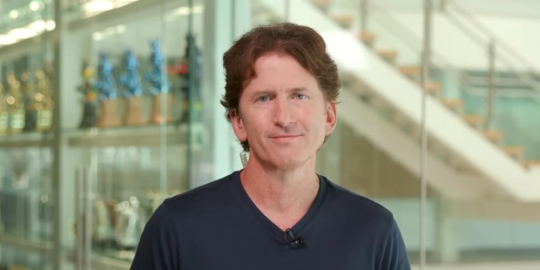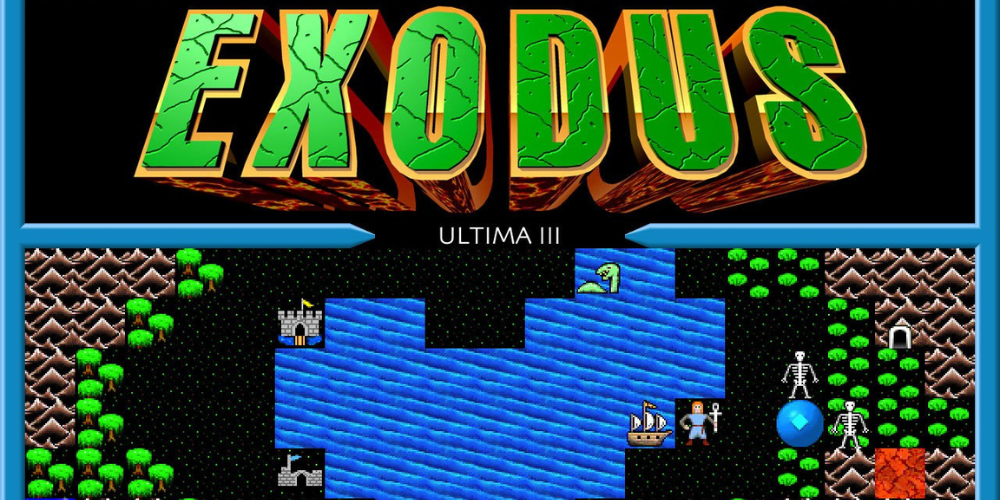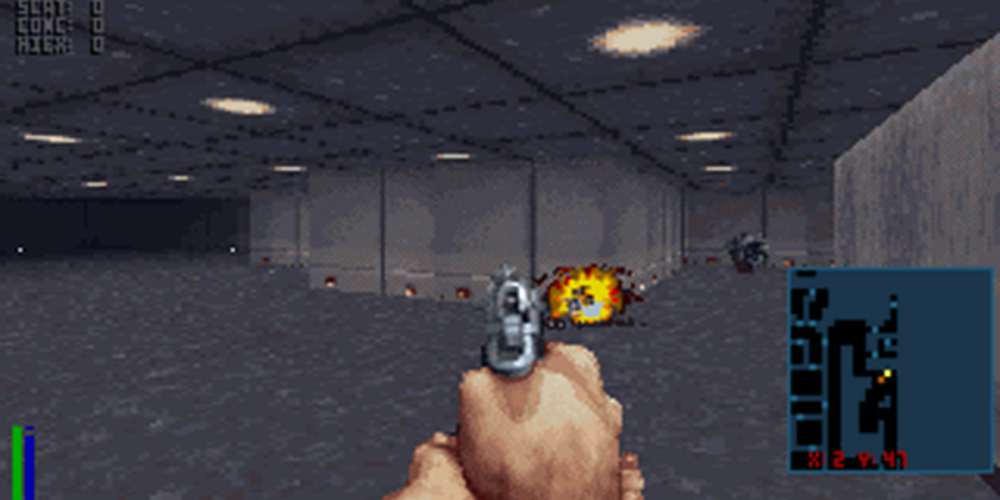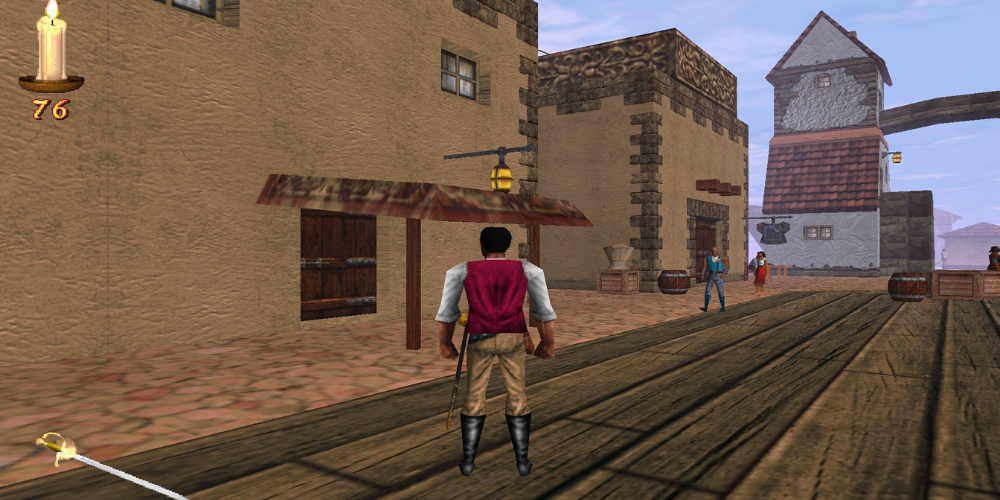
Todd Howard is not just a living meme who has been selling Skyrim for 13 years but also an incredibly talented game designer and a lucky guy who found a dream job. Today, we will tell you how Howard got into the industry, why he chose Bethesda, and why Starfield became a natural development of his work.
Apple II and big ambitions
Todd Andrew Howard was born in 1971 in the remote American town of Lower Macungie, Pennsylvania. He grew up a typical nerd and a fan of fiction and chess. From a young age, he developed a passion for gaming, frequently engaging with arcade classics such as Space Invaders and Pac-Man at a local pizza shop during his boyhood.
Later, the first real TRS-80 computers appeared at the school where young Howard studied. The version of the Star Trek text strategy installed on them impressed the boy very much. However, school equipment was still not his own, so Todd tried to convince his parents that he needed a personal computer—of course, for studying. The plan worked; the kid got a personal TRS-80 and an Apple II. And off it went.
Even then, Todd understood that he wanted to become a game developer and aspired to this dream with all his might. He modified other people's games and created his own. Howard developed his first game with a simple plot about a cowboy who rode a wagon and shot at 12. He worked on a Star Trek clone, an adaptation of the Traveller board game, and various Ultima-style RPGs.

The legendary role-playing games Wizardry and Ultima III: Exodus became decisive for the entire career of the future game designer. The first, he said, gave an understanding of how magical role-playing worlds work in general. The second one gave a sense of the reality of what was happening. These were precisely the kind of games he would like to create himself.
With such an extensive background, it would be a disservice to oneself not to sign up for a game design course… Todd Howard did when he began majoring in finance at the College of William and Mary in 1989 after graduating from high school. He later said that "it seemed like the easiest way to get a higher education." However, even then, Todd did not give up on programming and wrote some things for himself.
The course on Bethesda was taken back in college. Todd's girlfriend, who later became his wife, knew the guy's passion for sports games and gave him Wayne Gretzky's 3D Hockey. On the back of the box was the address of the Bethesda studio office, and it was just on the way home from college. Without thinking twice, the young developer decided to visit them for vacancies.
As expected, nothing came of this venture. The studio employee who opened the door for him asked the guy to at least finish his studies first. And he did so. And then he came again. And again, I was refused.
Then Todd got a job at a small company in Yorktown, Virginia, which made low-profile games. There was only one advantage: thanks to such work, Howard could travel to various exhibitions and meet with Bethesda employees there. And every time he came up, he reminded me of himself.
And the miracle did happen. Just a year after graduating from college, Todd became the developer of the coveted studio.
The Beginning Of A Creative Path

Todd's first week of work came in the summer of '94. The online electronics store Radio Shack returned 6,000 copies of their Terminator: Rampage project to Bethesda. At that time, games were released on several floppy disks, and some returns could contain several copies of the second disk. For days, employees opened the boxes with the game to check for suitable discs, copied the missing ones, put them back in the boxes, and packed them in film.
That was Bethesda when Todd Howard arrived: two dozen people doing everything simultaneously. Everyone had to know little about programming, art, design, quality control, and manufacturing. And despite the difficulties, it later helped Todd make better and more effective decisions.
The first significant projects in his career — The Elder Scrolls II: Daggerfall and Terminator: Future Shock — were developed in parallel. Having received the producer position, the future seller of Skyrim vouchers, first of all, went to design the shooter levels.
The license for the Terminator was then in limbo, so no one told the team what to do. The result was at least interesting. Terminator: Future Shock became one of the first accurate 3D shooters using the mouse and WASD keys for navigation. You can notice a unique approach in this game, which the studio will later become famous for. It's about the approach to creating a game world. It wasn't just elaborate: you could enter every building to look for valuable supplies. It was a sporadic feature at that time.
After that, Todd worked on level design and sound effects at Daggerfall. The distant ancestor of Skyrim was a genuinely colossal game of some completely unimaginable proportions. And in all these 160,000 square kilometers of land, 15,000 settlements, and 750,000 NPCs, there is a piece of Howard's soul.

And then, in 1998, The Elder Scrolls Adventures: Redguard happened—the first game, the creation of which was personally led by our hero. He has always loved projects at the intersection of genres, so he was unafraid to make the role-playing series' spin-off a pure adventure game—a kind of love letter from Prince of Persia and Tomb Raider.
However, the critics liked Redguard more than the players, and it ultimately failed. According to Todd himself, there were several reasons for this. First, Redguard is one of the latest games developed for MS-DOS and naturally needs to be technologically advanced. Second, the T.E.S. audience is used to the project.
The main problem turned out to be the combat system. The public took shooters very seriously and expected a high level from them—Bethesda simply did not deliver. It was necessary to somehow cope with the shooting, which most of the studio staff had never dealt with, and adapt the mechanics of V.A.T.S. to real-time battles.
For a while, the studio needed help understanding the positioning of such a system. What is it? Superpower? A well-aimed shot? Todd suggested combining ideas from Knight of the Old Republic with the implementation of collisions from Burnout. It turned out great.
Even though many fans of the turn-based roots of the series were deeply disappointed with the resulting "Oblivion with guns," Fallout 3 was a success. And again, it's time to take up The Elder Scrolls series.
Todd doesn't want to do something typical like Oblivion this time but also abandon the deliberate Morrowind exoticism. The new part needed to find its face. As a result, the pseudo-Scandinavian Skyrim, with its dragons, screams, and Nordic tombs, was chosen as the scene for T.E.S. V.
At first, the team feared a snow-strewn map might seem boring to the players. She didn't show up. Skyrim was released on November 11, 2011, and received the status of a legend, millions of memes, reissues, and mods. This game will still live forever.

The next step was Fallout 4. Events unfolded again on the East Coast, in the Boston area. After the greenish Fallout 3 and the "autumn" Skyrim, the new Bethesda project looked like a real carnival: the nuclear post-apocalypse has never been so colorful. Almost everything has improved: cinematic cameras, animations, shooting…
However, almost nothing is left of the once deep S.P.E.C.I.A.L. role-playing system. The dialog system has finally become a pumpkin — the word [SARCASM] has become a meme. Few people were delighted with the mechanics of construction.
These and other problems clearly showed that Fallout is no longer an RPG. The legend of role-playing games has finally turned into an F.P.S. with an open world, factions, and monotonous quests to protect settlements. Bethesda was shoveling money. The wagering fans were outraged. The golden Age was coming to an end.
So What's The Bottom Line, Todd?
By his own admission, Todd has not programmed games of the year since 2006, preferring to produce, curate, and think about ideas. All colleagues in the workshop recognize Todd's skill in creating unique, unlike-anything universes in which players can immerse themselves for hundreds of hours. He gives the players what they need—the freedom to truly live in his world. Each of his new projects offers something new while striving for perfection.
His ambition, faith in the team he manages, and healthy perfectionism are the keys that help Todd open any door. Howard was never afraid of change and broke conventions. Nothing is sacred to him, and if changes could benefit the cause, he indeed approved them.